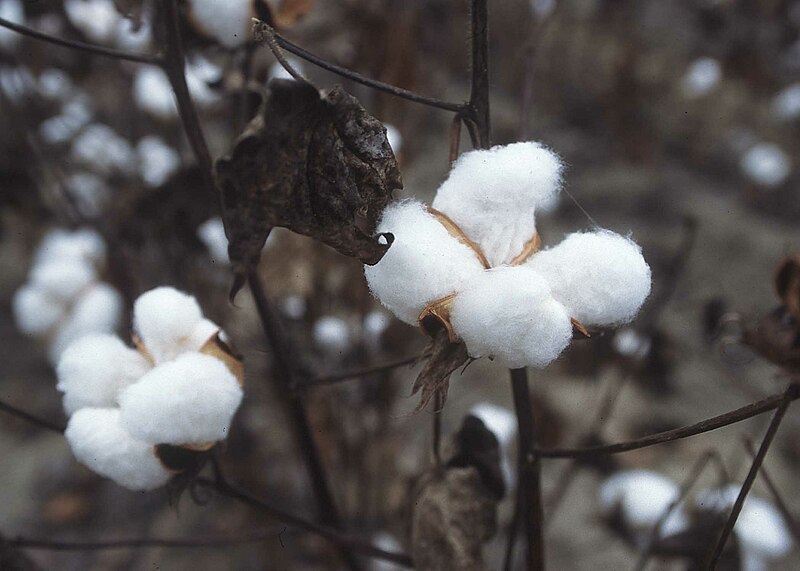
Size of this preview: 800 × 571 pixels. Other resolutions: 320 × 229 pixels | 640 × 457 pixels | 1,024 × 731 pixels | 1,280 × 914 pixels | 2,100 × 1,500 pixels.
Original file (2,100 × 1,500 pixels, file size: 116 KB, MIME type: image/jpeg)
File history
Click on a date/time to view the file as it appeared at that time.
| Date/Time | Thumbnail | Dimensions | User | Comment | |
|---|---|---|---|---|---|
| current | 00:31, 8 April 2006 |  | 2,100 × 1,500 (116 KB) | H2O-C | Cotton plant, Texas, 1996. Photo courtesy of USDA Natural Resources Conservation Service. ==Source== http://photogallery.nrcs.usda.gov/Index.asp ==Licensing== {{PD-USGov-USDA}} |
File usage
The following pages on the English Wikipedia use this file (pages on other projects are not listed):
- Better Cotton Initiative
- Bharuch
- Cotton
- Cotton production in Azerbaijan
- Cotton production in Chad
- Cotton production in China
- Cotton production in Ethiopia
- Cotton production in Pakistan
- Cotton production in Uzbekistan
- Cotton production in the United States
- Cotton recycling
- Eastern Wu
- Gossypium hirsutum
- History of cotton
- Katol
- List of Texas state symbols
- List of organisms by chromosome count
- Organic cotton
- Valledupar
- Williamson County, Texas
- Xinjiang cotton industry
- User:Austex
- User:Cottonwalyer
- User:Johan Jim/sandbox
- User talk:Cottonwalyer
- User talk:Majorly/Archives/46
- User talk:Majorly/Archives/All
- User talk:Mm40/Archive 1
- Wikipedia talk:WikiProject Userboxes/New Userboxes/Archive 2
- Template:Cotton production
- Template:Cotton sidebar
Global file usage
The following other wikis use this file:
- Usage on af.wikipedia.org
- Usage on ami.wikipedia.org
- Usage on anp.wikipedia.org
- Usage on ar.wikipedia.org
- Usage on ar.wikibooks.org
- Usage on arz.wikipedia.org
- Usage on awa.wikipedia.org
- Usage on ay.wikipedia.org
- Usage on azb.wikipedia.org
- Usage on az.wikipedia.org
- Usage on az.wikiquote.org
- Usage on az.wiktionary.org
- Usage on ba.wikipedia.org
- Usage on be-tarask.wikipedia.org
- Usage on be.wikipedia.org
- Usage on be.wiktionary.org
- Usage on bg.wikipedia.org
- Usage on bjn.wikipedia.org
- Usage on bn.wikipedia.org
- Usage on bo.wikipedia.org
- Usage on br.wikipedia.org
- Usage on bxr.wikipedia.org
- Usage on ca.wikipedia.org
- Usage on ca.wikibooks.org
- Usage on cdo.wikipedia.org
- Usage on ceb.wikipedia.org
- Usage on ce.wikipedia.org
- Usage on chy.wikipedia.org
- Usage on cv.wikipedia.org
View more global usage of this file.

Well, that’s interesting to know that Psilotum nudum are known as whisk ferns. Psilotum nudum is the commoner species of the two. While the P. flaccidum is a rare species and is found in the tropical islands. Both the species are usually epiphytic in habit and grow upon tree ferns. These species may also be terrestrial and grow in humus or in the crevices of the rocks.
View the detailed Guide of Psilotum nudum: Detailed Study Of Psilotum Nudum (Whisk Fern), Classification, Anatomy, Reproduction